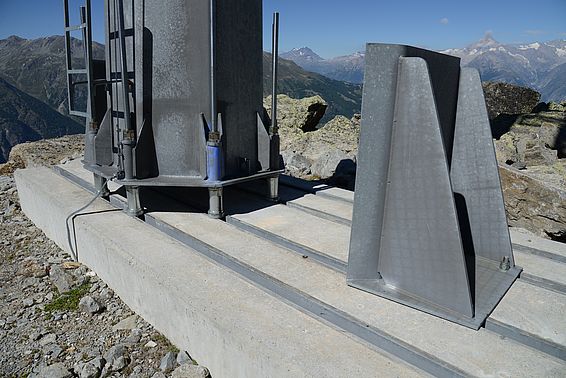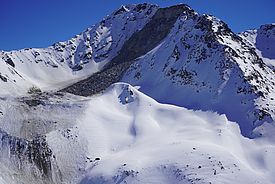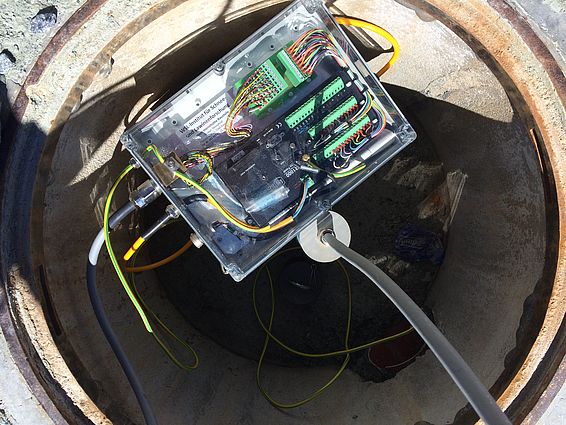Permanently frozen ground, or permafrost, is becoming rarer on our planet. Climate change causes it to warm up and ultimately thaw. This makes it a good indicator for detecting climate change. At the same time, alpine hazards increase as the ground thaws, increasing the potential for slope instability.
Permafrost in the Alps is warming by around one degree Celsius per decade. This has direct consequences for people and the economy. In high alpine regions with permafrost, rockslides and rock avalanches may well occur more frequently in the future, posing a threat to mountain sports enthusiasts as well as settlements and infrastructure. Mountain railway and cable car stations, masts, restaurants, shelters, water pipelines, avalanche barriers, telecommunications facilities, snow sheds and railway tracks play a crucial role in tourism, communications, energy supply and protection against natural hazards in mountain areas – and all of them are at risk if permafrost thaws.
Permafrost is any ground which continuously remains at or below 0 °C for two years or more. These permafrost soils have changed significantly in recent years, with hot summers occurring almost every other year since 2015. Ground temperatures have risen sharply, leading to ice loss and major slope movements in some areas. For example, rock glaciers (a mixture of debris and ice and a typical phenomenon in alpine permafrost regions) are now moving downhill two to three times faster than they were 20 years ago. In addition, the active layer (i.e. the topmost layer of permafrost), which thaws in summer, is getting thicker. As a result, material is more likely to be released from its often steep front, which in turn can lead to increased rockfall or debris flows.
Permafrost is also an important indicator of how the climate is changing. That is because, below a depth of 15 to 20 metres, seasonal fluctuations hardly affect the temperatures in the permafrost, which therefore indicate the long-term climate trend. And that trend is clear: over the long term, temperatures in the permafrost are rising and drawing steadily closer to the zero-degree level. This is confirmed by all the measurements conducted by the SLF. For 27 years, researchers at the institute have been measuring a wide range of data in a number of boreholes (currently 30) right across the Swiss Alps.
Until now, little research has been carried out into how water moves in the permafrost and what effects this has. SLF researchers have started tracking this, bearing in mind that climate change is altering the characteristics of permafrost and therefore how water and ice are distributed underground. Water-ice mixtures close to freezing point in the subsurface influence its geotechnical properties. In other words, the volume and occurrence of water in permafrost is partly responsible for how stable rock faces are and how quickly ice-rich soils move. This is a complex phenomenon. For example, conditions can change within a few metres as a result of only slight fluctuations in temperature very close to the 0 °C mark. In addition, water from precipitation and snowmelt can be found next to ice that is several thousand years old. The SLF is studying the occurrence and role of water in order to predict how permafrost will develop in the years ahead.
Previously published in this series:
- Part 1: Climate change and… winter sports
- Part 2: Climate change and... biodiversity
- Part 3: Climate change and… avalanches
- Part 4: Climate change and... forests
- Part 5: Climate change and… glaciers
Contact
Media Office SLF
- Telephone: +41 81 417 01 90
- E-Mail: medien(at)slf.ch
Links
Copyright
WSL and SLF provide image and sound material free of charge for use in the context of press contributions in connection with this media release. The transfer of this material to image, sound and/or video databases and the sale of the material by third parties are not permitted.


